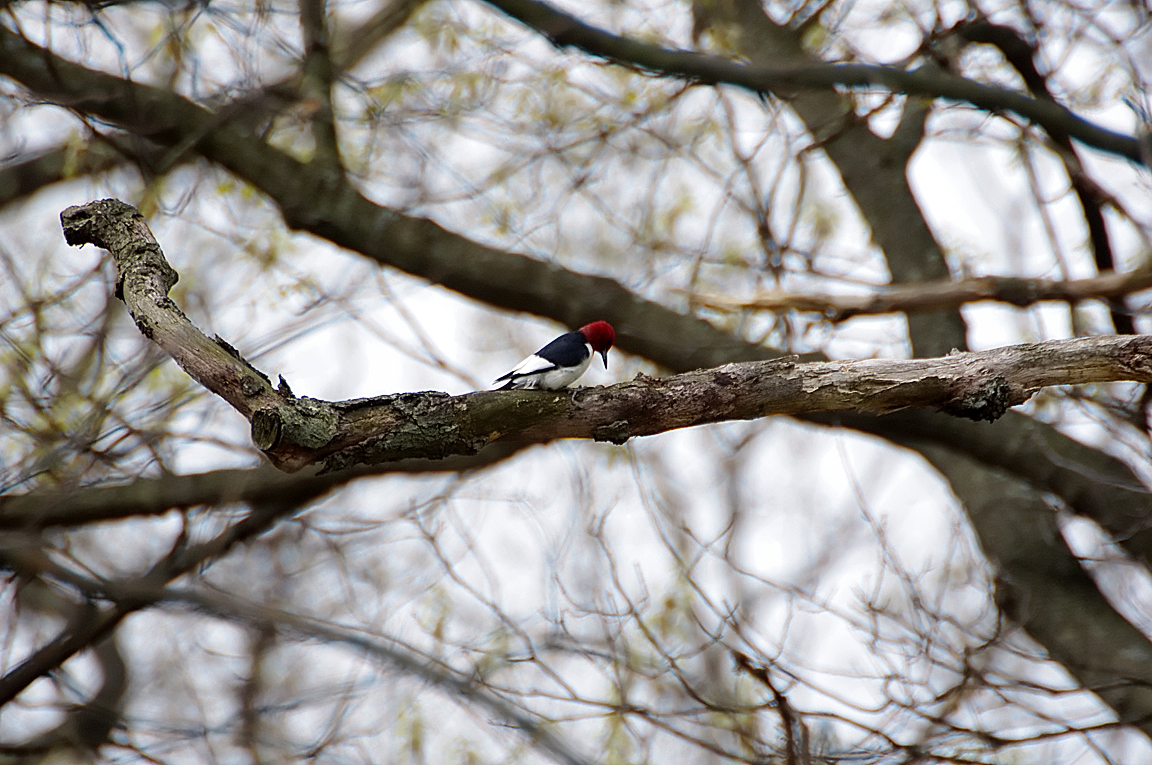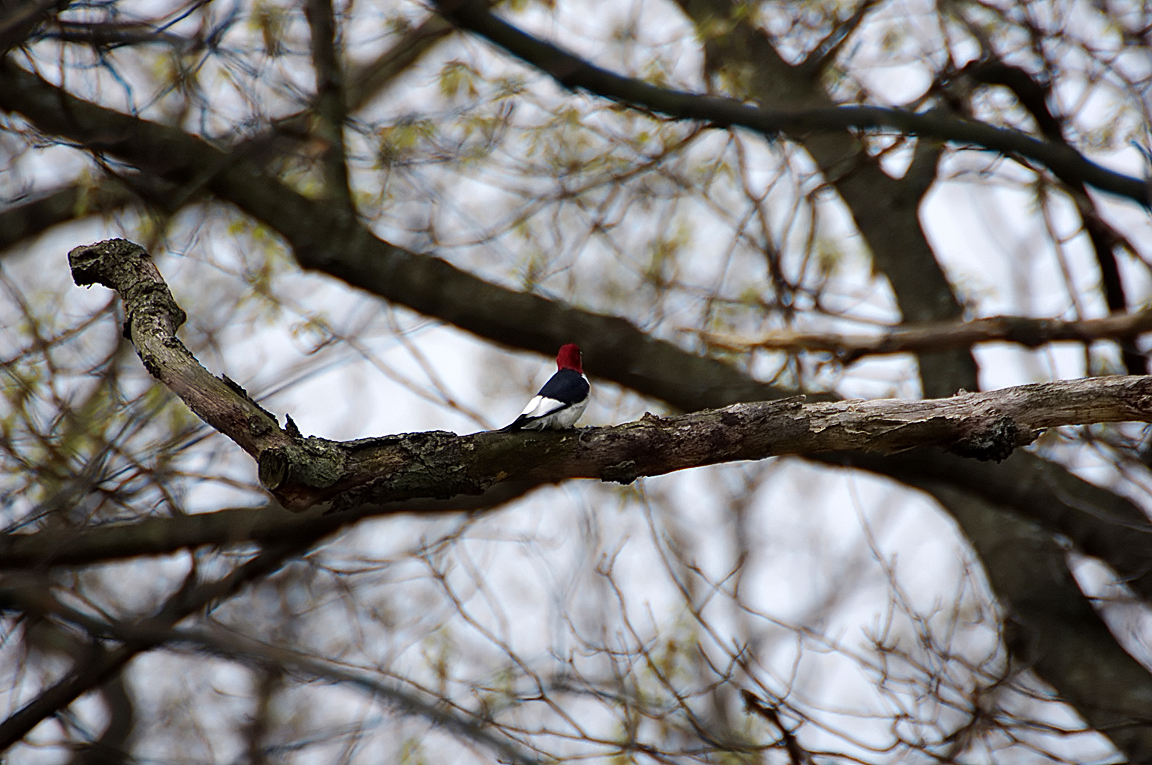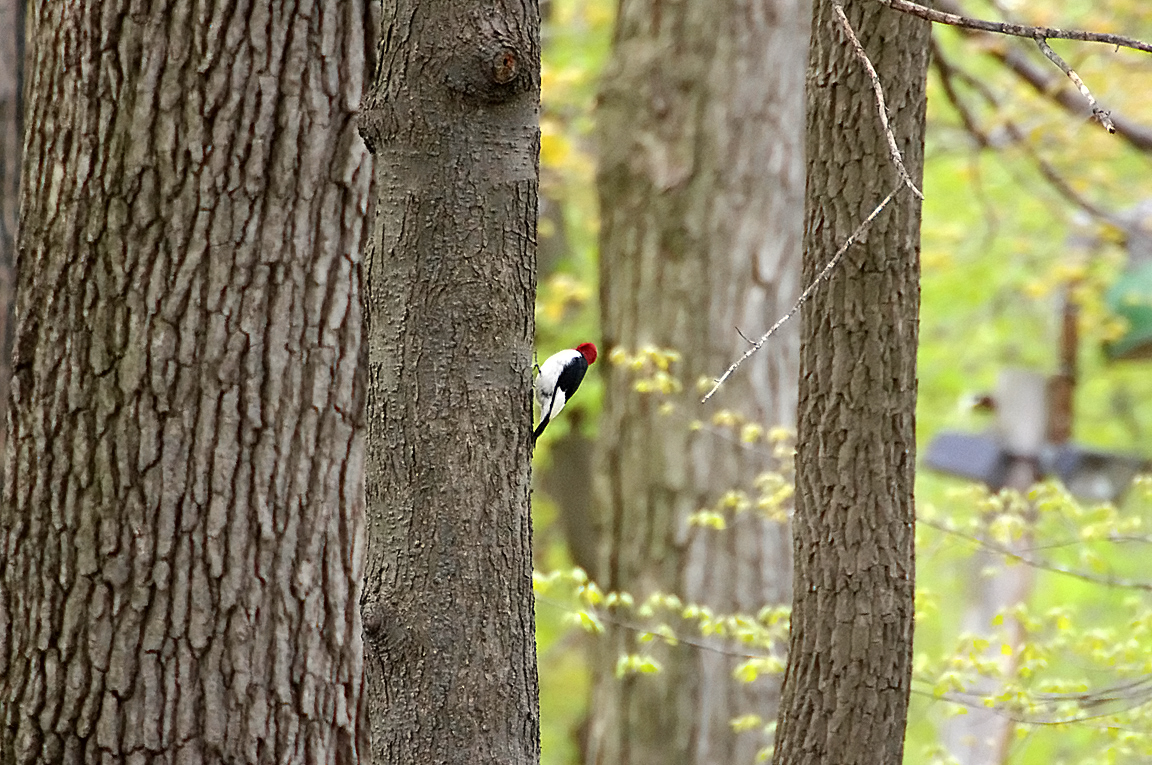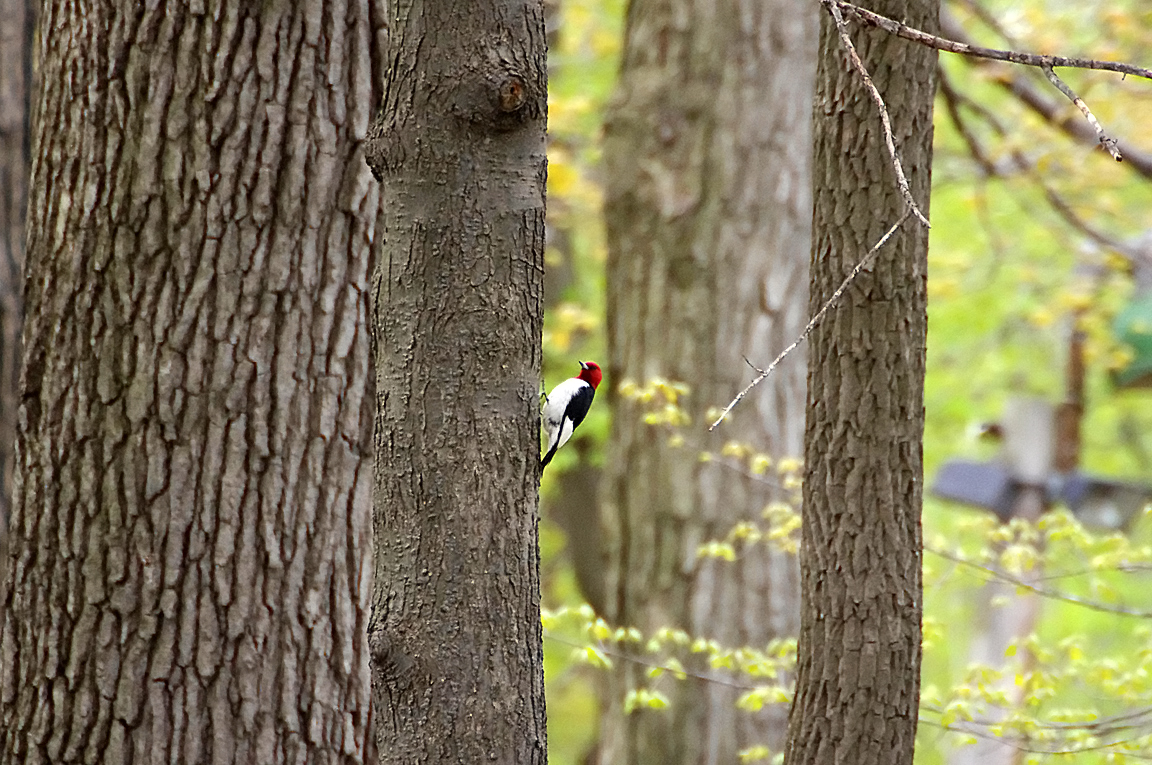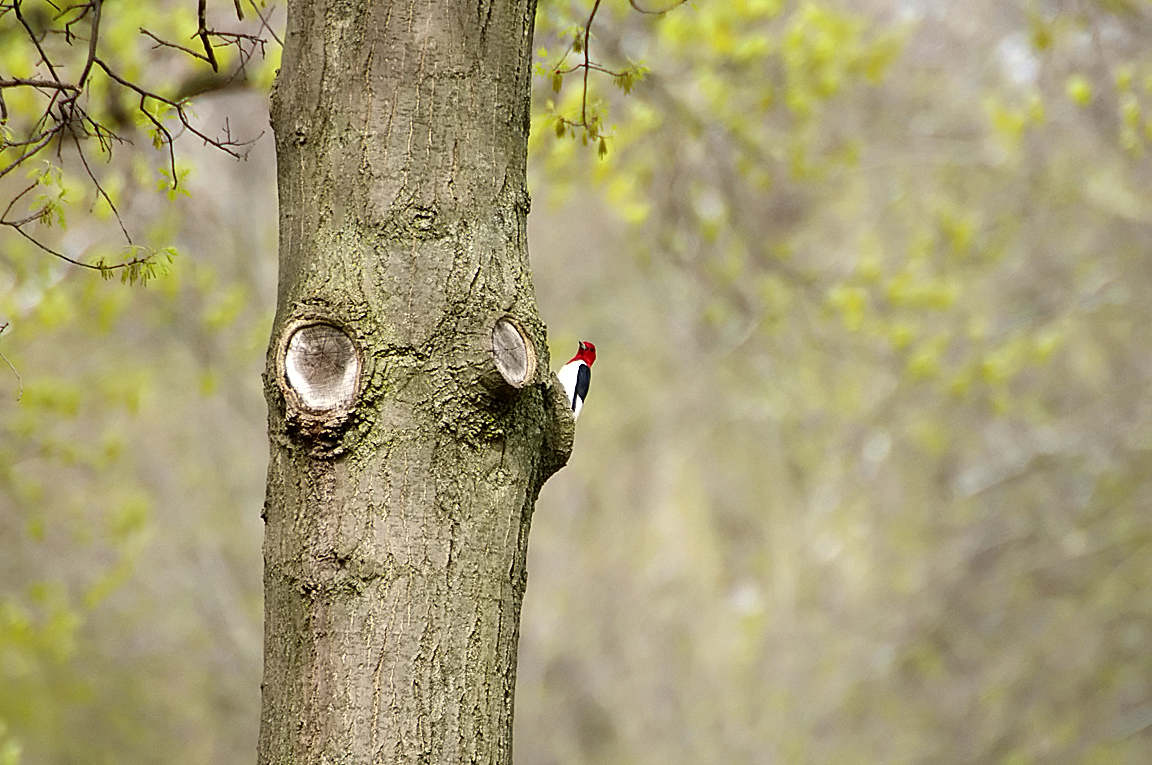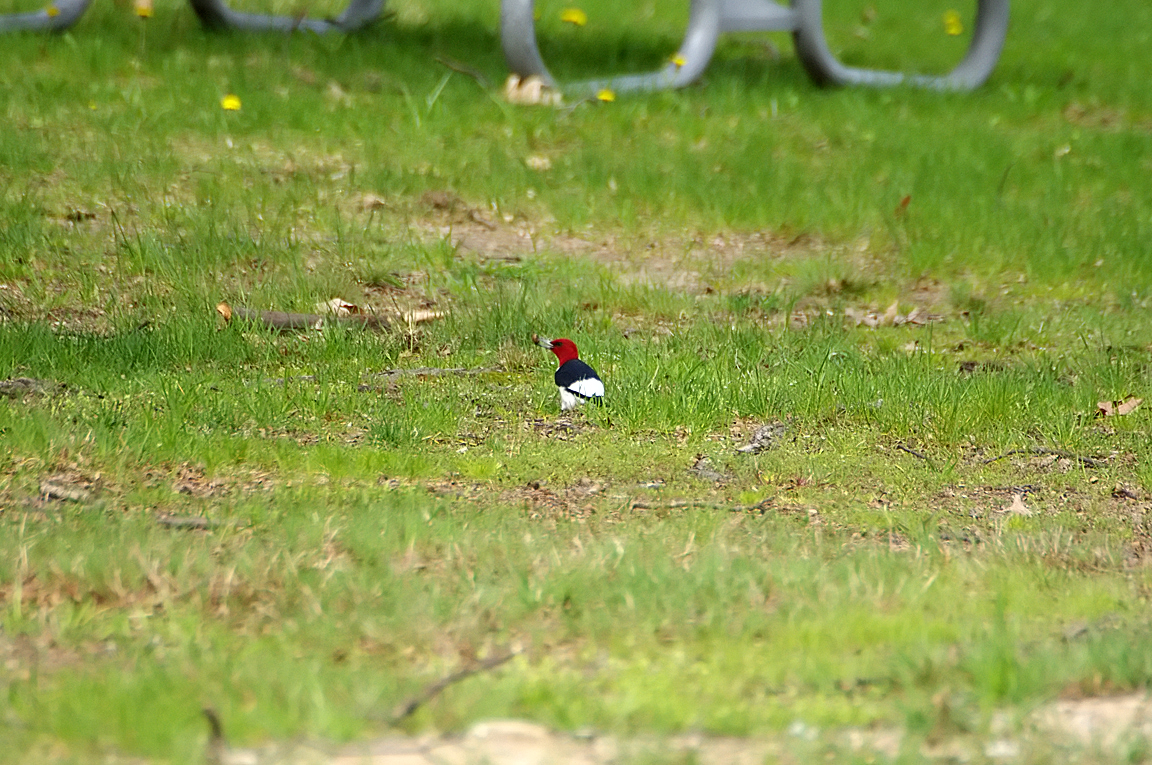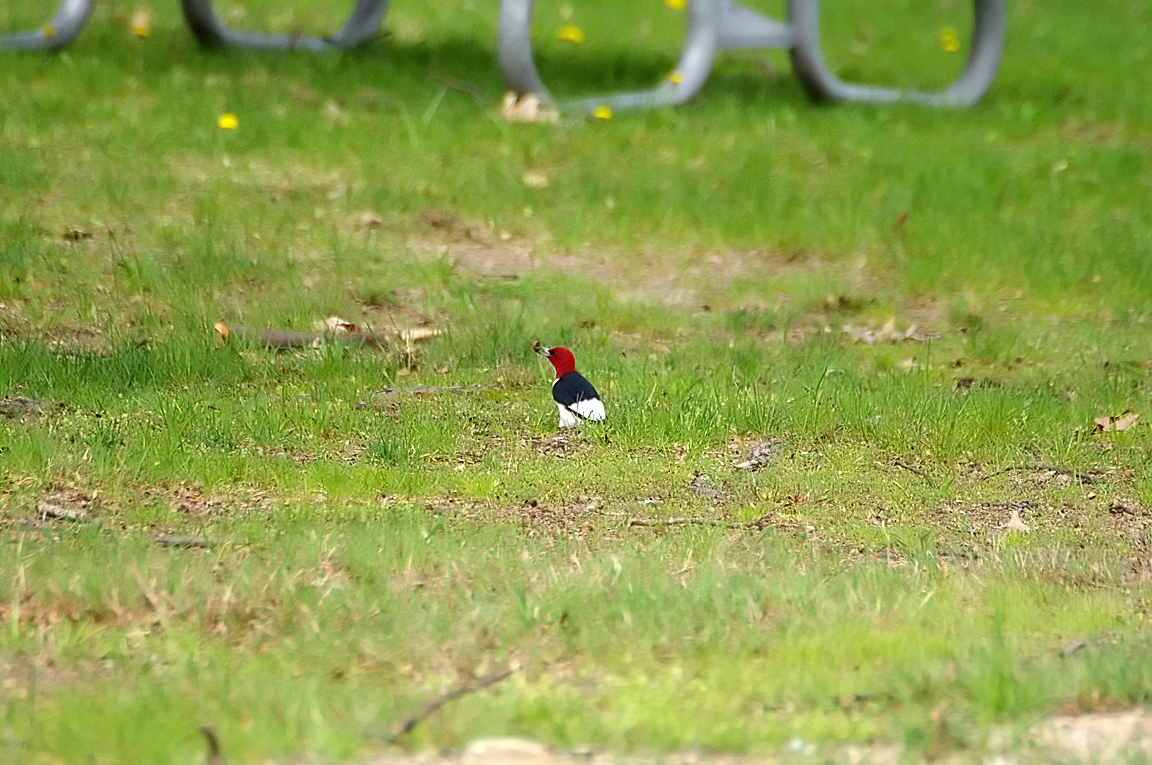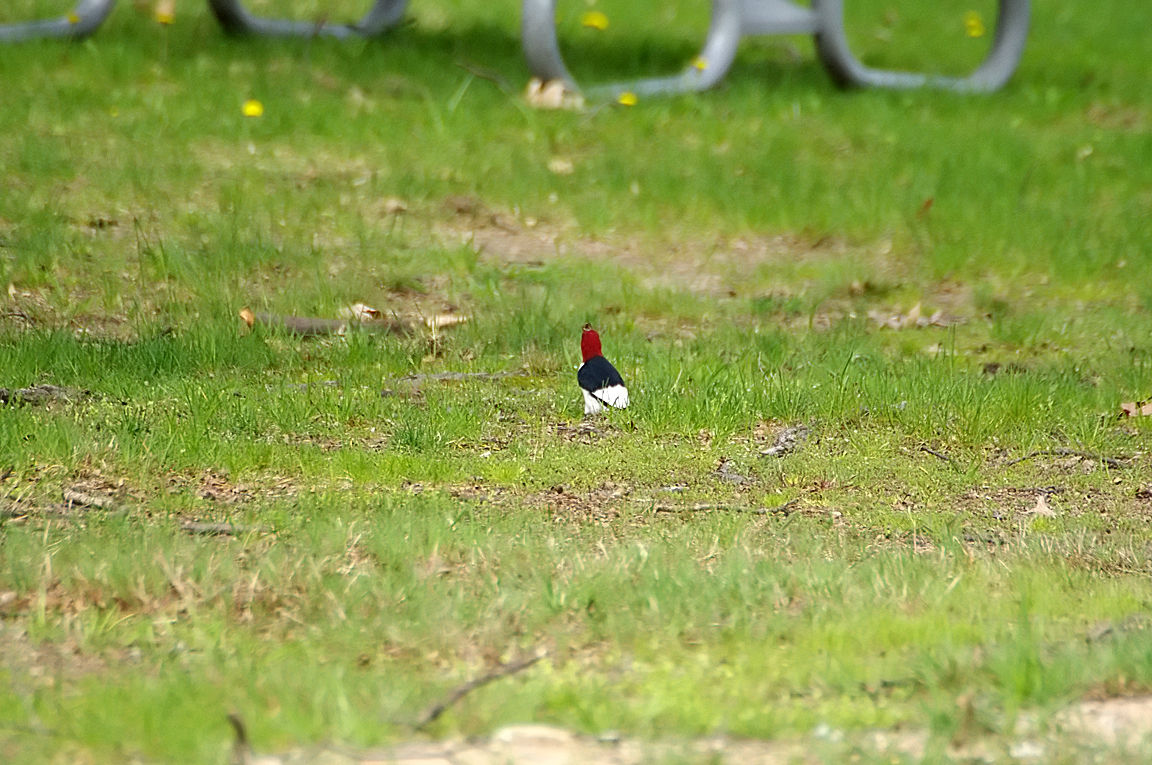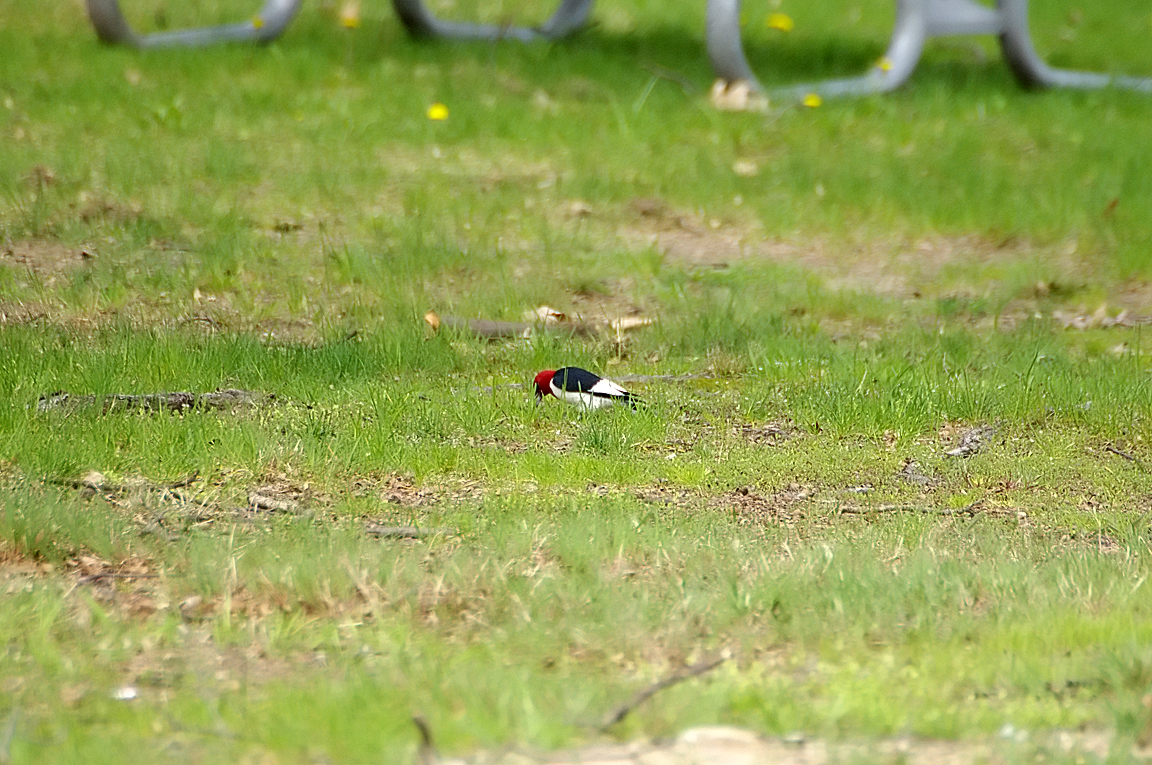|
|
|
 |
Red-headed Woodpecker
|
| Melanerpes erythrocephalus | |
An unmistakable bird, the Red-headed Woodpecker is striking at rest and in flight, showing its colors of red, black, and white. It is one of the most aggressive members of the family and one of the most omnivorous.
Interesting Information
-
The Red-headed Woodpecker is one of only four woodpeckers known to store food, and it is the only one known to cover the stored food with wood or bark. It hides insects and seeds in cracks in wood, under bark, in fence posts, and under roof shingles. Grasshoppers are regularly stored alive, but wedged into crevices so tightly that they cannot escape.
-
In addition to attacking other birds to keep them out of its territory, the Red-headed Woodpecker is also known to remove the eggs of other species from nests and nest boxes, destroy nests, and even to enter duck-nesting boxes and puncture the duck eggs.
-
The Red-headed Woodpecker benefited from the chestnut blight and Dutch elm disease. The devastating tree diseases killed many trees and provided nest sites for the woodpeckers.
-
A group of woodpeckers has many collective nouns, including a "descent", "drumming", and "gatling" of woodpeckers.
Description
Adult Description
-
Length Range: 22-23 cm (8.5-9.25 in)
-
Weight: 71 g (2.5 oz)
Medium-sized woodpecker.
White chest.
Bright red hood.
Sex Differences
Sexes Similar
Immature
Juvenile with gray-brown head and black bars on white secondaries. Immature with some red in gray head.
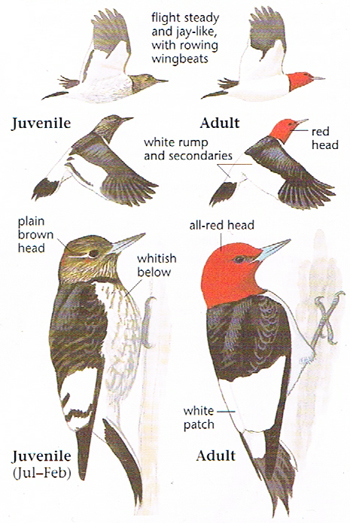
Photo taken from: The Sibley Field Guide by David Allen Sibley
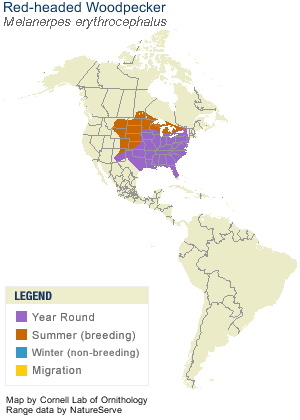
© 2003 Cornell Lab of Ornithology
|
Habitat |
|
|
Behavior |
|
Frequently flycatches for insects, flying out and returning to the same perch. Drills for insects in wood or bark. Occasionally visits feeders. |
|
Food |
|
Most omnivorous woodpecker. Beech and oak mast, seeds, nuts, berries, fruit, insects, bird eggs, nestlings, mice. |
Taxonomy
| Kingdom: | Animalia |
| Phylum: | Chordata |
| Subphylum: | Vertebrata |
| Class: | Aves |
| Order: | Passeriformes |
| Family: | Picidae |
| Subfamily: | Picinae |
| Genus: | Melanerpes |
| Species: | Melanerpes erythrocephalus |
Similar Species |
|
None |
|
Bird Sound |
|
Call a loud "tchur-tchur." |
|
Eggs look like this |
|
Photo taken from: ARCTOS Collaborative Collection Management Solution |
